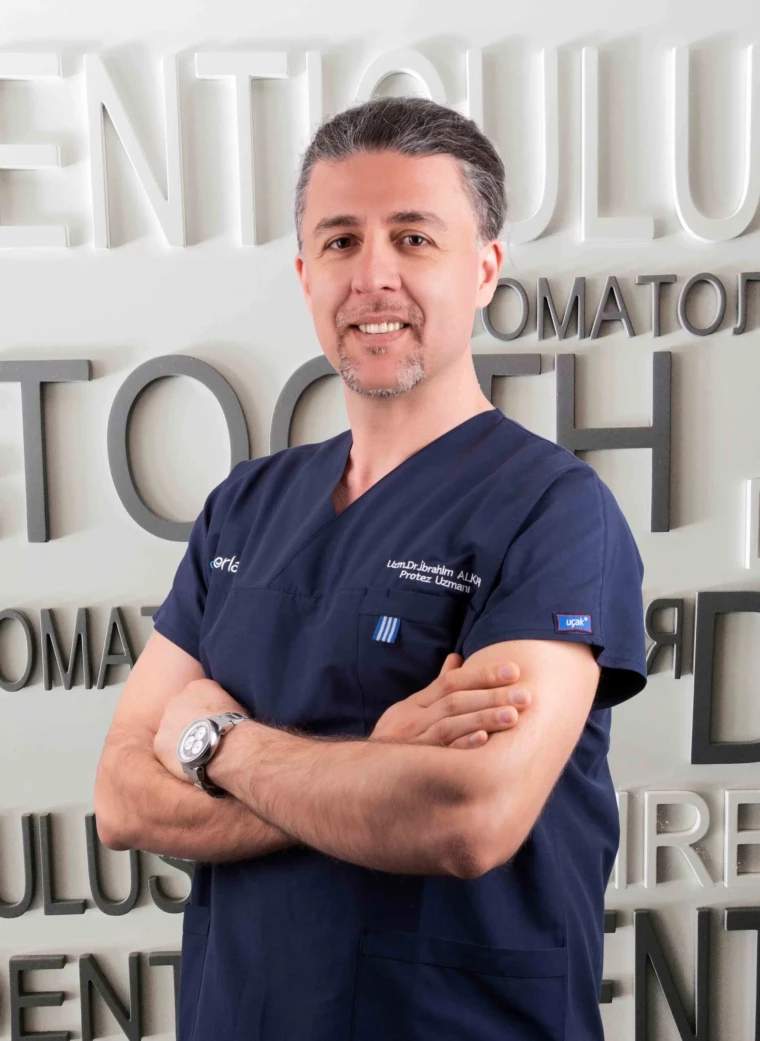Dental prostheses are artificial teeth prepared for the treatment of dental deficiencies. The purpose of the construction of dental prostheses is to regain the lost function due to lack of teeth, correct the deteriorated speech and provide aesthetic appearance. Prostheses can be prepared in fixed (veneers and bridges) or movable (detachable palates) designs. When deciding whether prosthesis is prepared in fixed or mobile design, the number of teeth remaining in the mouth, the locations of these teeth in the mouth and their strength are examined by the dentist.
- Traditional Full denture
The traditional full denture is inserted in your mouth in case of complete toothlessness or after all teeth remaining in your mouth have been extracted and the tissues have healed. Since healing may take months, there will be no teeth in your mouth during this time. - Immediate Full Denture
An immediate full denture is inserted immediately after that the remaining teeth are removed. (Your dentist takes measurements and makes models of your jaw during a prior visit.) While immediate dentures offer the benefit of never having to be without your teeth, they must be relined several months after being inserted. The reason is that the bone supporting the teeth reshapes as it heals, causing the denture to become loose. - Partial Denture
It is placed on your natural teeth with a metal nail attached to the partial denture. By placing crowns on some of your natural teeth, the denture is fixed. The partial dentures are used as an alternative to bridges due to their detachable features.

